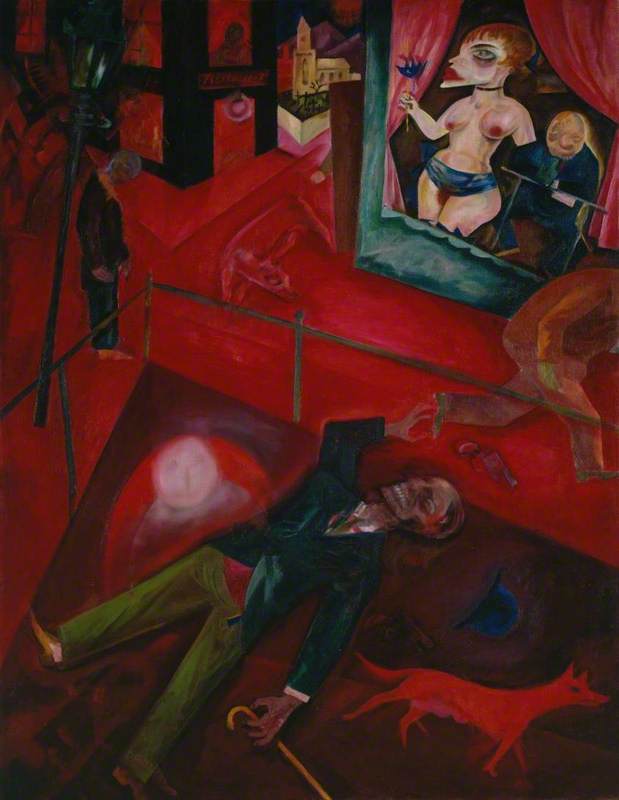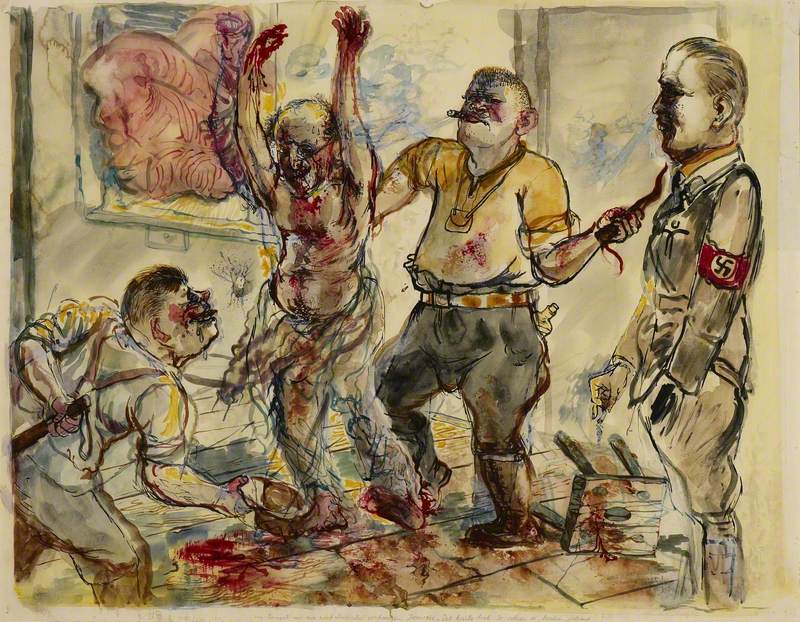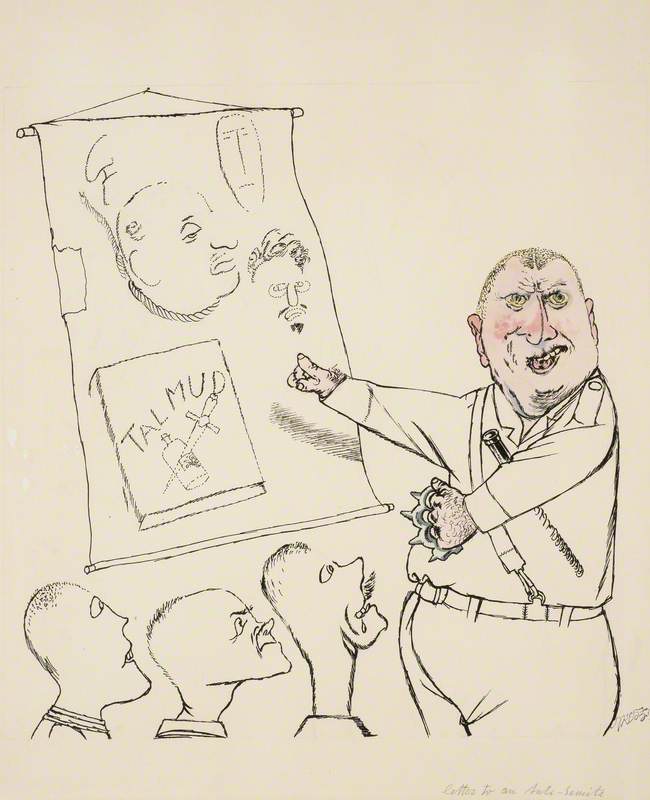(b Berlin, 26 July 1893; d West Berlin, 6 July 1959). German-born painter and draughtsman who became an American citizen in 1938. He began as a caricaturist and through his drawings he expressed his disgust at the depravity of the Prussian military caste. During the First World War he twice served in the German army and each time was discharged as being unfit for service. In 1917, with Heartfield, he Anglicized his name (adding an ‘e’ to ‘Georg’) as a protest against the hatred being whipped up against the enemy. The most famous of the satirical anti-war illustrations he made at this time is the drawing Fit for Active Service (1918, MoMA, New York), in which a fat, complacent doctor pronounces a skeleton fit for duty. From 1917 to 1920 Grosz was a prominent figure in the Dada movement in Berlin, and in the 1920s, with Dix, he became the leading exponent of the Neue Sachlichkeit.
Read more
In 1917 he published the first of several collections of drawings, through which he established an international reputation. The most famous are The Face of the Ruling Class (1921) and Ecce Homo (1927). In these and in his paintings he ruthlessly denounced a decaying society in which gluttony and depravity are placed beside poverty and disease; prostitutes and profiteers were frequently among his cast of characters. Grosz often used watercolour, and in spite of the nastiness of the subject matter and the bluntness of his satire, his works in this medium are remarkable for the sheer beauty and delicacy of their technique. His more conventional works of this time include a number of incisive portraits. He was prosecuted several times for obscenity and blasphemy, and in 1933, despairing at the political situation in Germany, he moved to America to take up the offer of a teaching post at the Art Students League of New York. In America he largely abandoned his satirical manner for more romantic landscapes and still lifes, with from time to time apocalyptic visions of a nightmare future. Although he won several honours in his later years, he regarded himself as a failure because he was unable to win recognition as a serious painter rather than a brilliant satirist, and he painted several self-portraits showing how isolated and depressed he was in his adopted country (The Wanderer, 1943, Memorial AG, Univ. of Rochester, New York). His autobiography, A Little Yes and a Big No, was published in New York in 1946. He returned to Berlin in 1959, saying, ‘my American dream turned out to be a soap bubble’, and died there shortly after his arrival, following a fall down a flight of stairs.
Text source: The Oxford Dictionary of Art and Artists (Oxford University Press)





